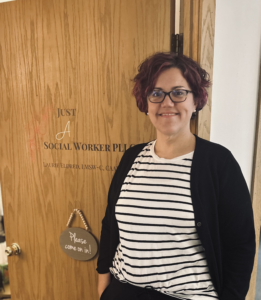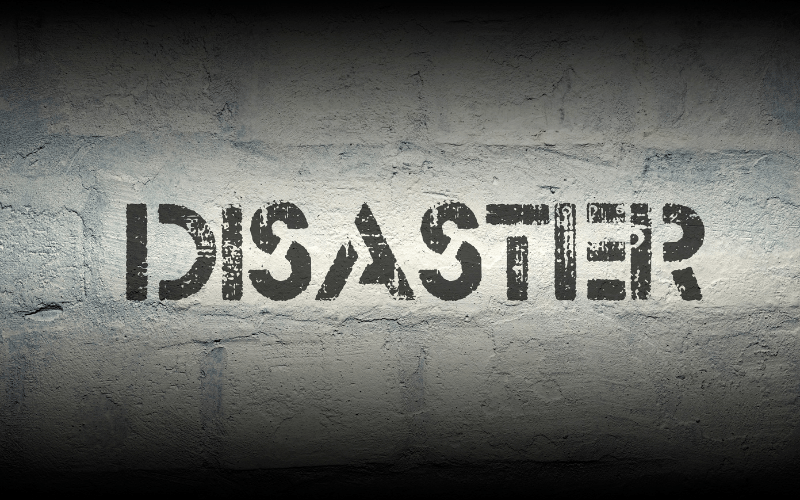Healing the Helpers: EMDR Group for Social Workers and Mental Health Providers
Guest Blog Post by Laurie Eldred, LMSW-C, CAADC
 Eye movement desensitization and reprocessing (EMDR) therapy is one of the most powerful tools therapists can use to assist clients with the healing of old wounds and unwinding of maladaptive patterns we have used to keep ourselves safe. These old wounds, often created during childhood or adulthood, continue to impact us in the present. Our brain is an incredible organ, and it also helps us adapt in ways that are healthy and ways that are not so healthy. These various adaptations are stored in our adaptive information processing (AIP) networks. Our healthy adaptations can bring us greater awareness of choice, neural flexibility, and compassion for ourselves and others.
Eye movement desensitization and reprocessing (EMDR) therapy is one of the most powerful tools therapists can use to assist clients with the healing of old wounds and unwinding of maladaptive patterns we have used to keep ourselves safe. These old wounds, often created during childhood or adulthood, continue to impact us in the present. Our brain is an incredible organ, and it also helps us adapt in ways that are healthy and ways that are not so healthy. These various adaptations are stored in our adaptive information processing (AIP) networks. Our healthy adaptations can bring us greater awareness of choice, neural flexibility, and compassion for ourselves and others.
Because therapists and social workers are human, we are not immune from childhood/adulthood trauma or unhealthy adaptive patterns. Additionally, we are at risk for secondary trauma or secondary traumatic stress through repeated exposure to the emotional pain of our clients and the systems we operate in through our work with clients.
Helpers needing help
Understanding this dynamic has led to a bold shift in my personal work to move farther up the stream to help the helpers. Guided by a deep personal and professional commitment, my passion to support others in their healing process is grounded in the belief that tending to the wounds of those who care for others not only fosters their own well-being but also prevents secondary trauma from taking root. As a therapist who specializes in working with other therapists, social workers, and mental health professionals, I have noticed patterns in these helping professional clients. Often, they present with experiences of primary and secondary trauma.
- Primary trauma are those experiences happening to a person that overwhelm their capacity to cope throughout life. We often think of primary trauma as big “T” events like being a victim of abuse or violence, witnessing abuse or violence (SAMHSA, 2024).
- Secondary trauma is the distress people experience from helping people with trauma, being a witness, or being told about traumatic events and experiences of others. Those in the helping professions are often susceptible due to the exposure and volume of exposure to trauma they listen to in their work, which can be compounded if the therapist works in an unsupportive system (Sprang et al., 2019).
Based on my experience working with other social workers and therapists, I see secondary and primary trauma coalescing into painful feedback loops of patterns of trauma responses, people pleasing, feeling not enough, poor boundaries, rescuing/rushing through, and feeling massively responsible for the actions of their clients.
In addition to my therapy work, I am currently engaged in quantitative research around the working conditions of social workers that has yet to be published. This project gathered data from surveys to a random group of social workers who were members of NASW in Michigan. The data gathered pointed to a link between the working conditions and the mental health of social workers; the better the agency addresses working conditions (for example: case loads, policies/practices of self-care, and pay), the better off the mental health rates of social workers.
This current research reveals a notable lack in the conversation and research on how to keep social workers in the field and support them to do the work many are called to do. A specific subset of this data on the working conditions of social workers with a self-identified disability will be presented during the Council on Social Work Education (CSWE) in October 2025.
One aspect of my clinical work involves using EMDR Integrated Group Treatment Protocol (EMDR-IGTP) which I used within the prison system. During the groups I led in prison, I received feedback from the group members that they had less nightmares and less distress while in prison. The members also felt the group was helpful to address the experience of being in prison versus a more individual approach addressing their trauma. This shared experience appeared to allow for greater safety and cohesiveness within the group. From this experience in prison addressing a shared experience of being in a unique environment, the idea grew to provide this modified EMDR tool to social workers and mental health professionals in early 2025.
The EMDR-IGTP protocol was created to address the shared experiences of people involved in mass events like a hurricane or other natural disaster (Jarero et. al, 2008). More currently, EMDR-IGTP has been used to support and even prevent secondary trauma after mass casualty events like school shootings and other big community events (Butler et.al, 2023). This group work can offer healing to people in the community being impacted by an event as well as provide a larger number of people the benefits of EMDR.
In February 2025, six sessions of EMDR-IGTP were offered to a small group of social workers and mental health professionals using the shared experience of being in the mental health field. These professionals were aware that their information would be used as a part of a learning process for other therapists. This group used the Secondary Trauma Stress (STS) screening tool pre and post test as a measurement of progress from the start to the end of the group along with follow up at 6 months and one year.
Highlights of using EMDR-IGTP with helping professionals
This initial group gathered to address the experience of being a social workers or mental health professional from just before they started in their education pursuit through today, and even into the future. All the participants had an individual experience with EMDR as well as an established relationship with me in the therapy space. They also completed the STS screening tool before group, at the end of group, as well as during periodic follow ups.
During individual therapy sessions between group sessions, the participants reported resolution of specific events related to being in their field placement – one reporting a greater resolution around a negative interaction with a supervisor, and another disclosed healing a specific traumatic event involving a client within their professional career. For three out of the four participants who completed the post STS evaluation, there was a decrease in STS score over the six weeks. At the six month follow up using STS, the scores continue to be a bit lower than when they were reported earlier in 2025.
While this is not a formal research study with peer evaluation and rigorous research standards for the study, I am hopeful this will spark greater conversation and need to study the use of EMDR-IGTP for social workers and mental health professionals impacted by primary trauma as well as possibly reduce their risk of secondary trauma when working with clients who themselves have complex trauma needs.
Healing the helpers builds community
EMDR therapy can benefit clients with large variety of needs and yet we must not forget to help the helpers. Social workers/mental health professionals can benefit from EMDR work in order to reduce their likelihood of secondary trauma, to address their primary trauma needs, to reduce job distress, and retain social workers and mental health providers in the profession. The healthier the helper; the healthier the people and systems the social workers/mental health professionals serve.
Laurie Eldred, LMSW-C, CAADC, has been in the social work field since 2004. She is experienced in private practice, substance use work, trauma-informed care, systems work, and criminal justice-involved individuals. Eldred seeks to support other social workers through her private practice “Just A Social Worker PLLC” to build resilience in the social work field, address primary and secondary trauma and set healthy boundaries. She teaches as an adjunct professor at Grand Valley State University and is a published author of the book Micro Moments of Self Care for Social Workers.
References
Butler, C., Steckler,S., & Usadi, E. (2023, May). Using EMDR therapy in disaster response. EMDRIA Focal Point Blog. https://www.emdria.org/blog/using-emdr-therapy-in-disaster-response/
Jarero, I., Artigas, L., Montero, M., & Lena, L. (2008). The EMDR integrative group treatment protocol: Application with child victims of a mass disaster. Journal of EMDR Practice and Research, 2(2), 97–105. https://doi.org/10.1891/1933-3196.2.2.97
Kaptan, S. K., Dursun, B. O., Knowles, M., Husain, N., & Varese, F. (2021). Group eye movement desensitization and reprocessing interventions in adults and children: A systematic review of randomized and nonrandomized trials. Clinical Psychology & Psychotherapy, 28(4), 806–824. https://doi.org/10.1002/cpp.2549
SAMHSA. (2024). Trauma and violence – what is trauma? Retrieved from: https://www.samhsa.gov/mental-health/trauma-violence
Sprang, G., Ford, J., Kerig, P., & Bride, B. (2019). Defining secondary traumatic stress and developing targeted assessments and interventions: Lessons learned from research and leading experts. Traumatology, 25(2), 72–81. https://doi.org/10.1037/trm0000180
Back to Focal Point Blog Homepage
Additional Resources
If you are a therapist interested in the EMDR training:
- Learn more about EMDR therapy at the EMDRIA Library
- Learn more about EMDR Training
- Search for an EMDR Training Provider
- Check out our EMDR Training FAQ
If you are EMDR trained:
- Check out the EMDRIA Let’s Talk EMDR Podcast
- Check out the EMDRIA Focal Point Blog
- Learn more about EMDRIA membership
- Search for EMDR Continuing Education opportunities
If you are an EMDRIA™ Member:
- Learn more about EMDR Consultation
- Find clinical practice articles in the EMDRIA Go With That Magazine®
- Search for articles in Journal of EMDR Practice and Research in the EMDRIA Library
Date
November 10, 2025
Contributor(s)
Laurie Eldred
Client Population
First Responders/Healthcare Workers
Practice & Methods
Group, Your EMDR Practice





